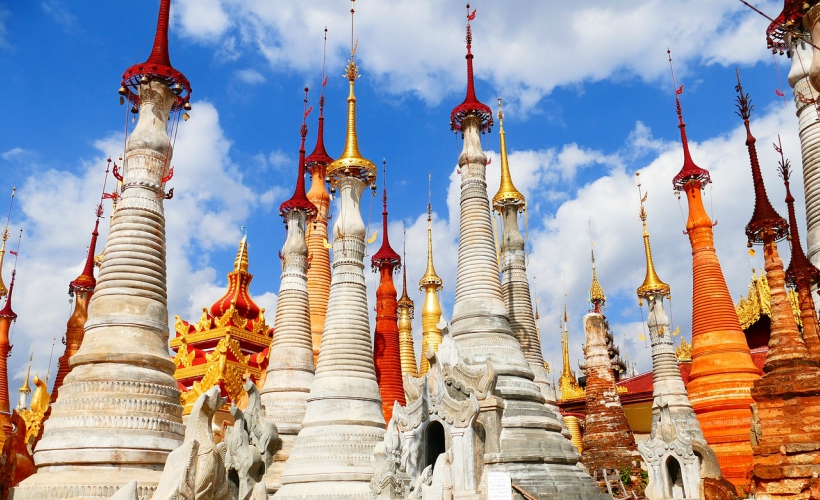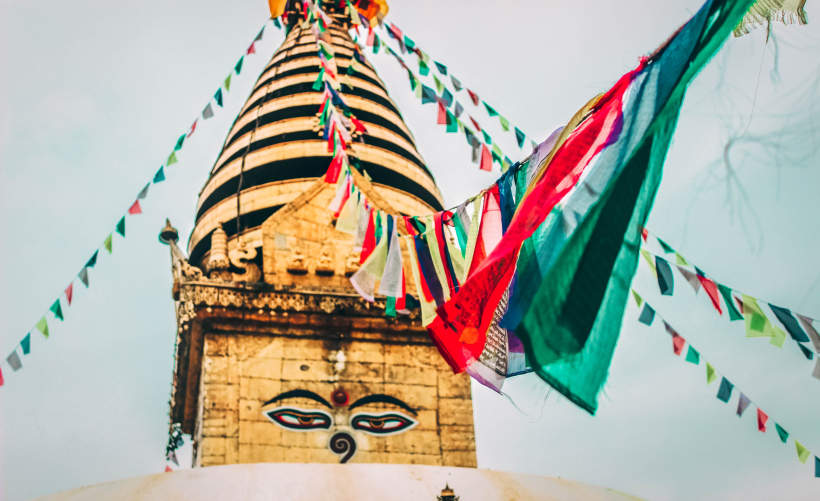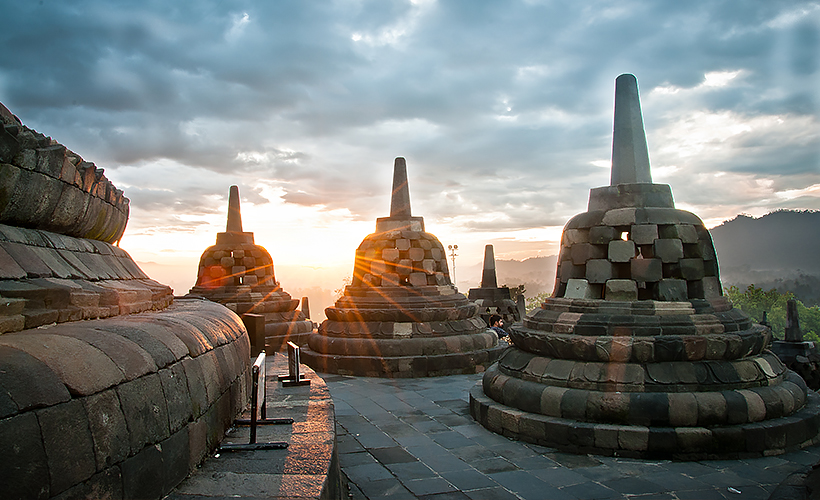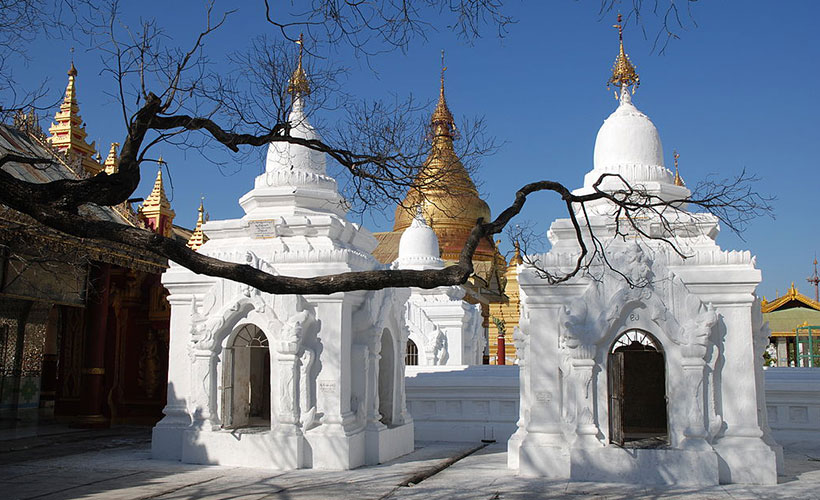
At the mention of the ‘the world’s largest book’, you’d probably picture a large, heavy leather-bound publication. You’d perhaps also imagine that the pages were made paper or some similar form of parchment that’s slowly yellowing with age. What if I told you that the world’s largest book, kept tucked away in a Buddhist temple in Mandalay, Myanmar, had none of these qualities? Don’t worry, I thought it did too!
Here’s the truth: the world’s largest book is a tome etched on more than 700 stone slabs. It’s quite a sight, and if you wish to see it for yourself, just visit the Kuthodaw Pagoda. Known as Maha Lawaka Marazein Paya in Burmese, this large walled complex sits right at the foot of Mandalay Hill in the Northern part of Mandalay, east of the Mandalay Royal Palace. It hosts a large, annual festival each year during the full moon in October.
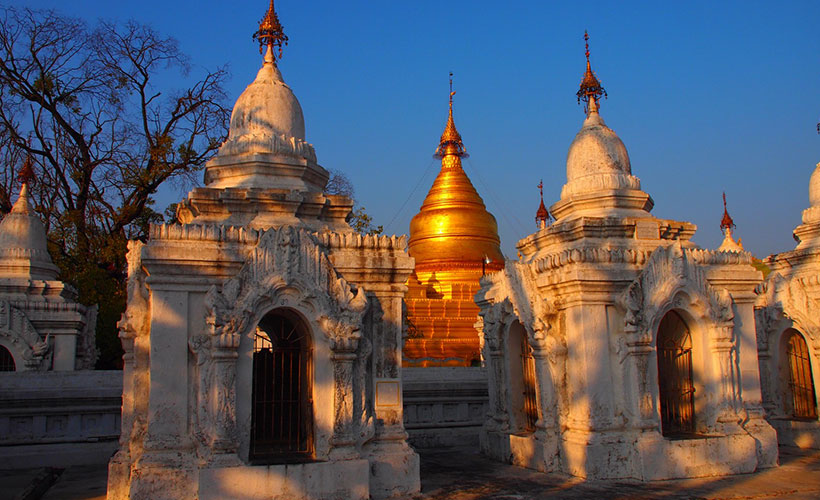
The main stupa of Kuthodaw Pagoda stands at 57 metres. Built in 1857, it’s also completely gilded in gold leaf. Spiralling out from the central Pagoda are 730 shrines, each housing a marble tablet etched back and front with a script. All 729 of these tablets hold the Tipitaka Pali Canon of Theravada Buddhism – the teaching of Buddha – while the 730th tablet explains how the tablets came into being. King Mindon Min was worried that the teachings, then written on dried palm leaves, would be lost and devised the idea to inscribe the scripts on marble slabs.
Love the magic of the written word? Let the literary prowess of these books inspire your desire for travel:
13 Books That Will Kick Your Wanderlust Into High Gear
Kuthodaw Pagoda was built and the book made on instruction from King Mindon Min at the same time that he had the Royal Palace built. It took eight years to complete the book with each stone slab having between 80 and 100 lines of script on each side. Ancient manuscripts written on dry palm leaves served as the source material for the book. Each marble slab page is 153 centimetres tall, 107 centimetres wide, and 13 centimetres thick. If stacked on top of each other like the common book, it would be 103 metres tall!
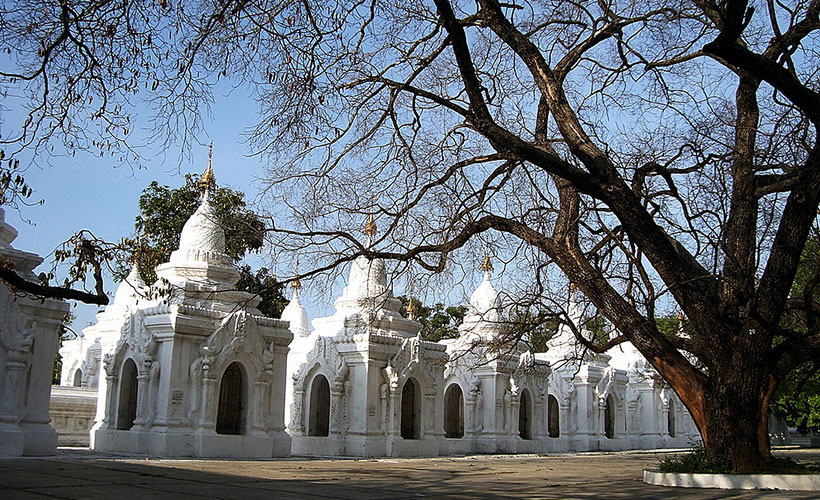
The tablets were originally created in 1860 and contain gold leaf in the etched letters with precious stones like rubies and diamonds adorning them. During the British invasion in the mid-1880s, the temple was looted and the gold and stones were stolen. After the British left, the Burmese people donated money and restored the Pagoda and stone slabs. Restoration work included filling the slabs with black ink made from the soot of paraffin lamps and straw ash, called shellac. This process took a few decades to complete.
Needless to say, the temple and its immediate surrounding area is a Buddhist holy site, so ensure that you observe respect for religious practices and take your shoes off at the entrance. Keep in mind to also dress and behave appropriately. Most importantly, enjoy your time at one of Southeast Asia’s most amazing historical sites.

